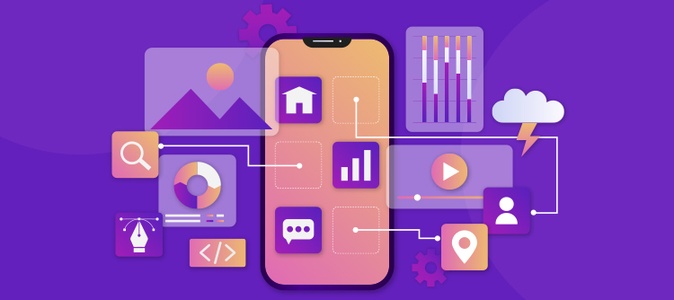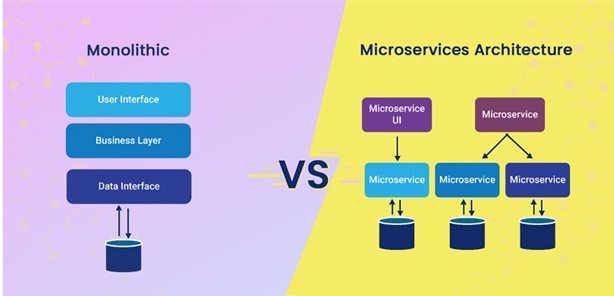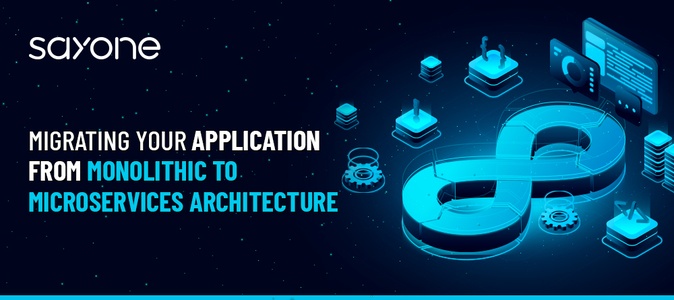How to Minimize Monolithic Application Downtime

Share This Article
Migrating Your Application from Monolithic to Microservices Architecture
Table of Contents
Subscribe to Our Blog
We're committed to your privacy. SayOne uses the information you provide to us to contact you about our relevant content, products, and services. check out our privacy policy.
In monolithic applications, stack interdependency stops the introduction of the latest technologies. The present stack, by itself, can pose many challenges related to the web. Most monolithic applications tend to be unavailable or ‘down’ whenever there is an upgrade or there is a failure. This also means that if there is a B2B dependency from a third party or the outside world, there would be more complications leading to increased decision-making time required and thus more downtime. Availability is the percentage of time during which a service is operating and producing the intended output.
Thus, in such an application, even the smallest upgrades may turn out to be expensive. If we start considering the expenditure, then the backlog for system upgrades would grow longer, extending your nightmares. Deployment challenges are big for monolithic applications, as any change in the modules would require the entire application to be redeployed. This is a time-consuming affair, with having to repeat the whole cycle for every change. This could also be a frequent, repetitive cycle. Scaling is nearly impossible in such a scenario.
Download our ebook for FREE "Porting from Monoliths to Microservices: Is the shift worth it?"
Deploying an entire monolithic solution or application in one go poses a high risk as all modules will be deployed even for a single minor change in one of the modules. Deploying the complete application means that we will have to test the functionality in its entirety, and we cannot go live without testing. With higher interdependency, one change may cause a problem in another module.
Unplanned downtime can occur in the following situation. Complete production deployment requires that the code be fully tested and, therefore, the production deployment has to be scheduled. This is a time-consuming task and results in high downtime. Though planned, this downtime can affect both the business and customers as the application will be unavailable. This could cause a huge revenue loss to the business. Removing production bugs involves considerable delays and is only more complex with some previous bugs getting unresolved.
Thus, as monolithic systems grow large, they become less flexible and scalable. So, how can we modernize monolithic applications?
Microservices Systems

Microservices are becoming increasingly popular systems that are replacing monolithic systems. This architecture is loosely coupled and each service, designed to perform a single function, runs on its own. It is also developed, deployed, upgraded, and maintained by independent teams.
Read our blog “Business Revamp to Microservices – What are the Benefits”.
Nowadays, organizations are bringing much-needed flexibility to their legacy monolithic systems by introducing microservices. Most microservices run as single-function systems.
Advantages of Microservices
Here are some Advantages of Microservices:
- Lowered costs and increased efficiencies
- Increased scalability
- Increased agility
- Independently deployable
- Easier upgrades
- Easier maintenance
- Easier and faster deployments
- Less time to market
- Increased modularity
- Improved fault tolerance
Microservices are a better fit when you consider the priorities and resources of large organizations and government departments. They provide more freedom for the business to increase its resources and thereby reduce time to market. They can scale to meet high-demand performance (whether 10 or 10 million customers) requirements. They also help to extend the life of your product through a process of gradual evolution.
However, there are some tradeoffs between monolithic and microservices architecture systems.
- Project teams have to discover services as candidates for potential reuse. These services should be documented and tested appropriately so that the reuse becomes significantly more advantageous than building modules from scratch.
- Teams should carefully monitor interdependencies between services. Downtime of the system, service outages and upgrades can all have cascading effects downstream and these impacts should be proactively analyzed.
- It is also vital to manage your microservice delivery carefully, while ensuring that the SDLC is as automated as possible so that it is short.
Do you think that your organization would benefit from shifting to microservices? Call us today!
Zero Downtime Migration to Microservices
Microservices releases are major events, and the platform will likely experience a long downtime. Unfortunately, this affects the customers and revenues of the business adversely. However, when you need scale development and performance of a monolithic application, microservices deserve serious consideration.
Adopting continuous delivery practices can change such release programs so that you can increase deployment frequency and decrease downtime. This means you do not have to schedule downtime (or schedule less downtime) for maintenance. There would be no more off-hours for your worldwide customer base.
Some steps that you can take to bring these into effect when migrating to microservices are the following:
- Map out the deployment process step by step (in detail) and segregate activities as allowing limited features and downtime. This helps you to prioritize work and reduce downtime.
- Introduce data schema changes that are backward compatible because the old code will run with the new schema. Automated checks can help to spot and ease locked tables.
- Ensure that during the upgrade, the application still runs with limited functionality.
- Fully automate the upgrade process and review and track changes.
- Zero downtime migration does not mean that the latest versions are being run by all the services. It means that while the upgrades are happening, your customers do not notice anything amiss while continuously enjoying the outputs.
Conclusion
It is difficult to overcome any of the issues that you face with a big monolithic application without re-architecturing the system to microservices.
Kick-start your microservices journey! Give us a call today!
Why Choose SayOne for Microservices Development
At SayOne, our integrated teams of developers service our clients with microservices that are fully aligned to the future of the business or organization. The microservices we design and implement are formulated around the propositions of Agile and DevOps methodologies. Our system model focuses on individual components that are resilient, fortified, and highly reliable.
We design microservices for our clients in a manner that assures future success in terms of scalability and adaptation to the latest technologies. They are also constructed to accept fresh components easily and smoothly, allowing for effective function upgrades in a cost-effective manner.
Our microservices are constructed with reusable components that offer increased flexibility and offer superior productivity for the organization/business. We work with start-ups, SMBs, and enterprises and help them to visualize the entire microservices journey and also allow for the effective coexistence of legacy systems of the organization.
Our microservices are developed for agility, efficient performance and maintenance, enhanced performance, scalability, and security.
Share This Article
Subscribe to Our Blog
We're committed to your privacy. SayOne uses the information you provide to us to contact you about our relevant content, products, and services. check out our privacy policy.



